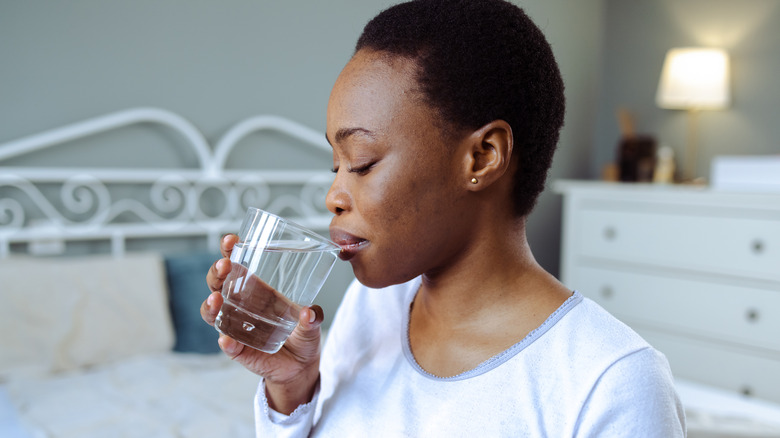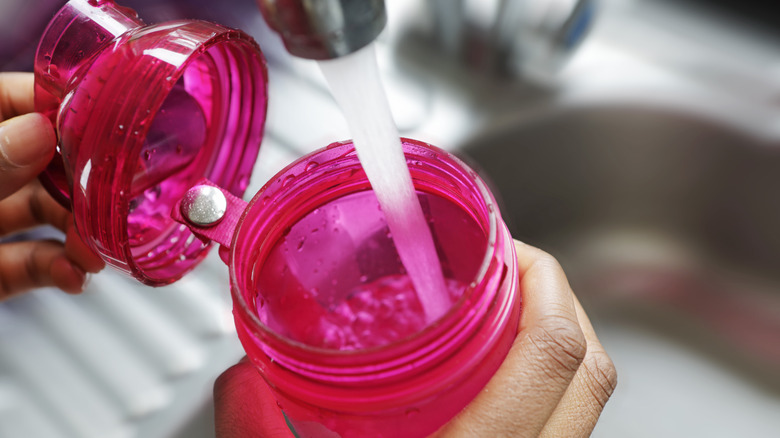How Much Water Should You Drink To Prevent Getting A UTI?
What would you guess is the number one most commonly treated outpatient infection in the United States? Perhaps you might assume an upper respiratory infection or an ear infection. Neither of these answers would be correct, however. But if you guessed a urinary tract infection (UTI), you'd be right.
Our urinary tract is made up of the bladder, kidneys, ureters, and urethra (via Penn Medicine). When bacteria infiltrates the urinary tract by way of the urethra, the result can be a UTI. Also referred to as a bladder infection, symptoms predominately include an increased urge to pee, pain or burning sensations, urine discoloration, cramping, and more. Researchers from a 2019 narrative review published in Therapeutic Advances in Urology say that as many as 60% of adult women will experience one or more UTIs at some point during their lives. For men, this number stands at 12%, reports the Urology Care Foundation.
Drinking water is an easy way to help protect against these common infections. But just how much water should a person aim to drink to keep their risk level low?
How increasing your water intake may protect against recurrent UTIs
While some people are simply more prone to contracting UTIs than others, there are ways in which we can reduce our chances for infection. One such way is by staying adequately hydrated.
In a 2018 study published in JAMA Internal Medicine, researchers looked at whether drinking more water reduced UTI risk in 140 pre-menopausal women who dealt with repeat infections. All participants drank less than 1.5 liters of water on a regular basis. Over the course of a year, those in the intervention group drank 1.5 liters of water each day — in addition to the amount of fluid they would normally drink. Those in the control group stuck only to their normal fluid intake. Health data collected at the 6-month and 12-month mark revealed that women in the water group had fewer recurrent UTIs than those who drank no additional fluids. Specifically, the average number of recurrent UTI cases over the course of the study stood at 3.2 in the control group, compared to an average of 1.7 cases in the water group.
Be careful not to drink too much water
Reinforcing these study findings, experts at the Mayo Clinic also suggest drinking 1.5 liters of fluid daily to help keep urinary tract infections at bay. That's the equivalent of a little over 6 cups of water a day. In doing so, you may not only prevent future UTIs, but you may also help flush out an existing infection. However, researchers from a 2020 scientific review published in The Journal of Family Practice caution against over-hydrating as a means of UTI prevention. While this may be beneficial for individuals with low levels of daily fluid intake, there could be risks for those who already drink sufficient or high levels of fluid each day.
Furthermore, you don't want to rely on water alone for protection against UTIs. Good hygiene practices are important too. This includes wiping from front to back when using the bathroom in order to avoid any transfer of bacteria from the anus to the urethra. Additionally, make sure you're peeing as often as you need to. Holding in your pee can create a cozy home for bacteria, as this keeps the bladder warm and moist. Therefore, you don't want to ignore the urge when nature calls. This is particularly important following intercourse, as peeing can help rid the area of bacteria.



